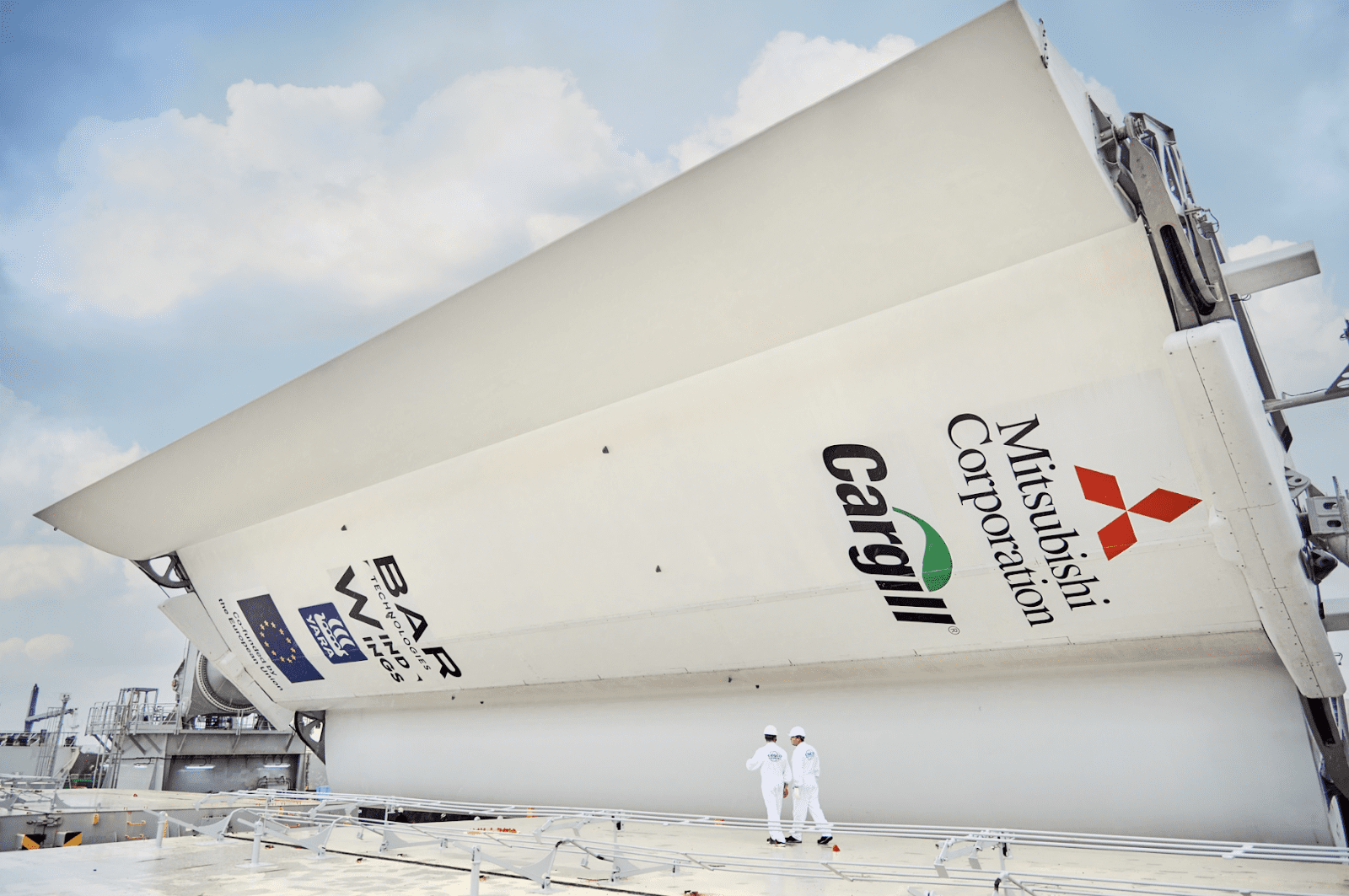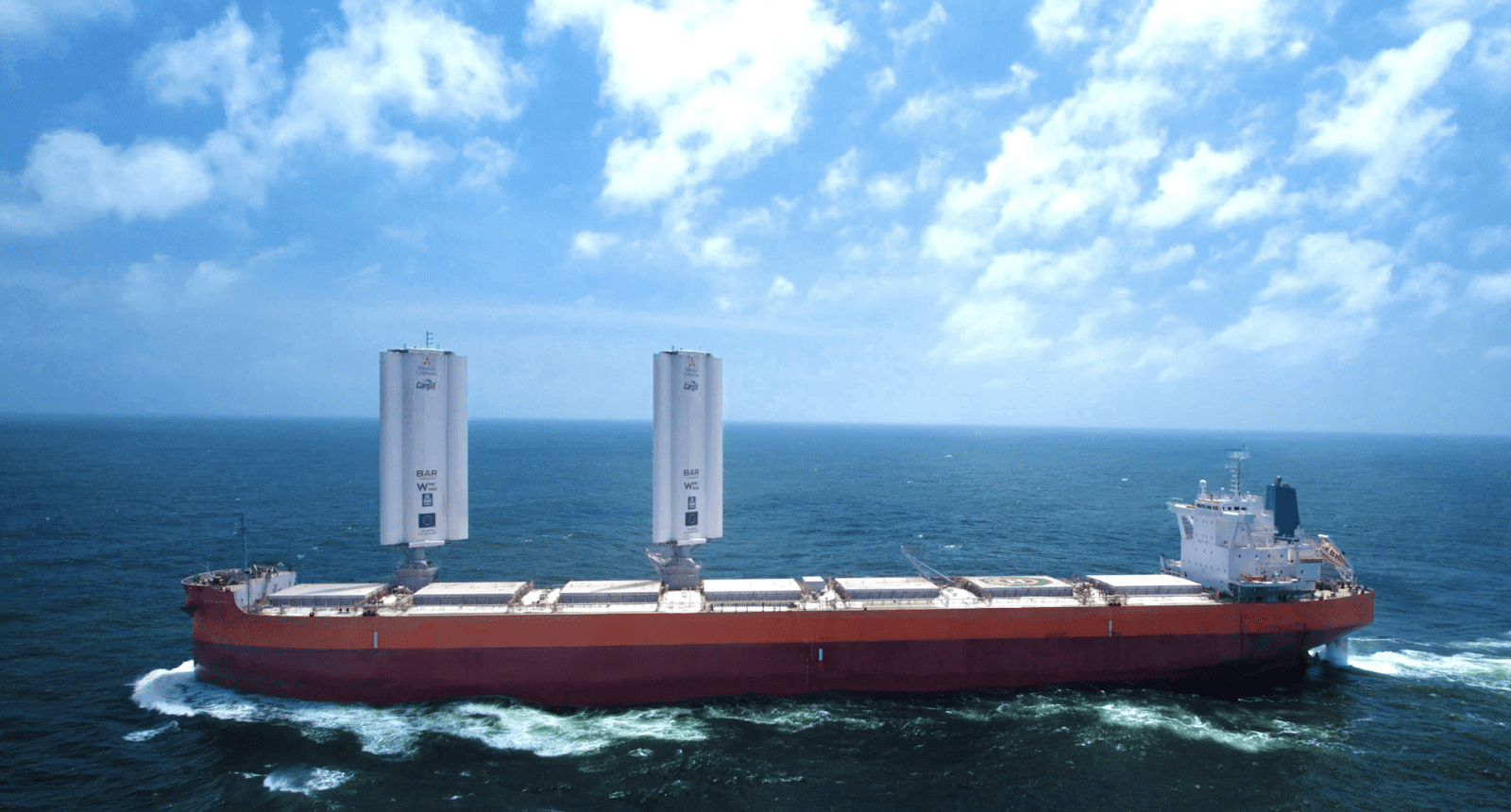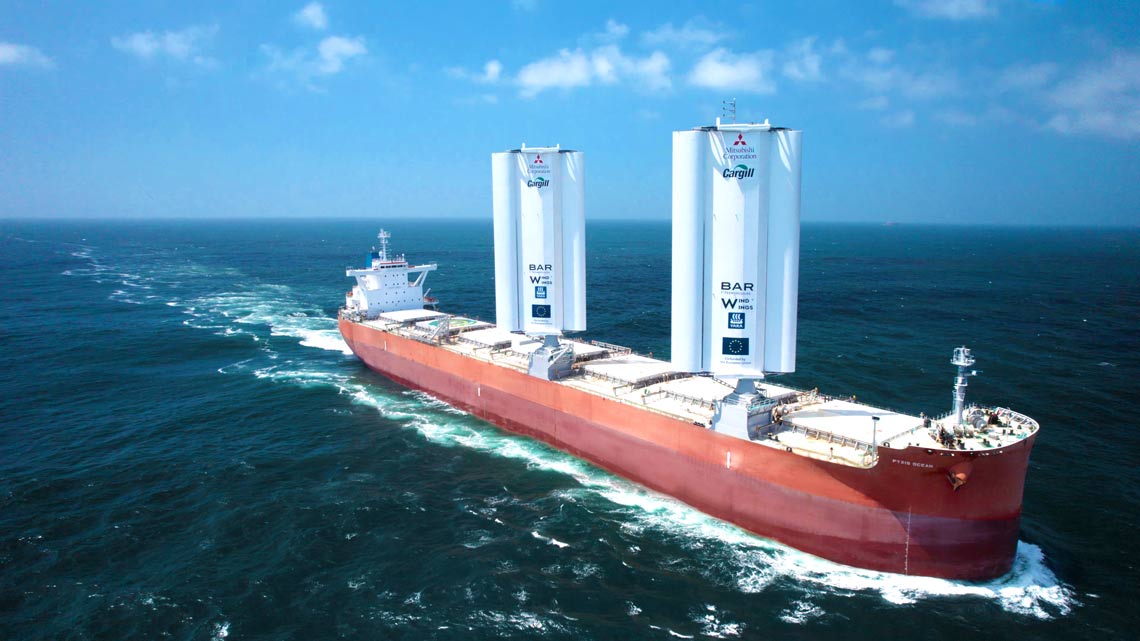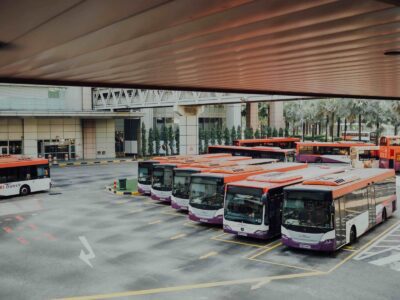Transoceanic accounts for 3% of all global greenhouse gas (GHG) emissions. The International Maritime Organization (IMO) recognizes the need to reduce shipping’s carbon footprint. However, almost all mega-ships require diesel power to make the lengthy journeys.
The IMO hopes to reduce maritime emissions by 50% by 2050, thus outlining strategies for shipping companies to use. Wind power is making a comeback in light of these carbon reduction guidelines.
Cargill, the global food distributor, has embraced the wind-power comeback by outfitting a vessel with giant sails to cut emissions and reduce diesel fuel use. They are called WindWings, developed by BAR Technologies in the U.K., and built out of steel and glass. These are the same materials wind turbines are made from.
Cargill says the WindWings will be attached to Mitsubishi’s Pyxis Ocean freighter. The sails stand 37.5 meters, or 123 feet, tall and function like traditional canvas ones but don’t need to be opened manually, like their pre-modern ancestors. These rotate to harness wind power and fold down when entering the port.
If BAR’s calculations are correct, the WindWings should reduce maritime emissions by 30%. They will also save around 1.5 tons of fuel per structure per day.
There is potential for even further fuel savings on transoceanic trips. Less GHG emissions and lower expenses are a direct result of the WindWings.
“Wind is a near marginal cost-free fuel, and the opportunity for reducing emissions, alongside significant efficiency gains in vessel operating costs, is substantial,” John Cooper, CEO of BAR Technologies, said in a statement. “We’ve invested in our unique wind sail technology to provide vessel owners and operators with an opportunity to realize these efficiencies.”

Photo Courtesy BAR Technologies
Canary Media reports the Pyxis Ocean is already on its maiden voyage. The ship will sail from China to Brazil. It made the first leg of the journey in the South China Sea. After departing Shanghai, the Pyxis Ocean stopped in Singapore.
The ship can carry around 81,000 metric tons of grain, corn, and other food products. In a time when global food security is a growing concern, the Pyxis Ocean is a valuable tool in keeping supply chains running smoothly. Doing it with a carbon-free impact is a bonus but marvelous nonetheless.
WindWings is not a universal solution to maritime emissions. They definitely can help, and with other companies like Maersk introducing more green methanol, Oceanbird’s Wingsail vessel, or Lürssen’s hydrogen-powered superyacht, the road to carbon-neutral ocean travel is not as far away.
However, diesel is still needed for certain portions of travel, especially if conditions are not ideal for wind power. The distance of voyages and how many ships can be fitted with these massive steel-and-glass sails will also have to be considered to measure the success of BAR’s tech.
BAR will make custom plans for each ship interested in being outfitted with the sails.

Photo Courtesy BAR Technologies
“If international shipping is to achieve its ambition of reducing CO2 emissions, then innovation must come to the fore,” Cooper said in a press release. “Wind is a near marginal cost-free fuel, and the opportunity for reducing emissions, alongside significant efficiency gains in vessel operating costs, is substantial.”
“Today is the culmination of years of pioneering research, where we’ve invested in our unique wind sail technology and sought out a skilled industrialization partner in Yara Marine Technologies in order to provide vessel owners and operators with an opportunity to realize these efficiencies,” Copper continued.
Development of these sails was made possible by funding from the European Union’s CHEK Horizon 2020 plan.
The European bloc has been funding various clean-tech and decarbonization projects, including ways to reduce maritime emissions.
CHEK Horizon’s goal is to build two vessels: a wind-powered bulk carrier and a hydrogen-powered cruise ship. These vessels will have the latest clean tech to “reduce greenhouse gas emissions by 99% and achieve at least 50% energy savings,” the official website says.
“Changing regulations and uncertainty about future greener marine fuels makes choosing the right vessel to charter with a long-term view complicated,” Jan Dieleman, president of Cargill’s Ocean Transportation, said in a statement. “With the WindWings technology, Cargill will be able to offer customers a solution that improves vessel efficiency, independent of the fuel or type of engine used.”





